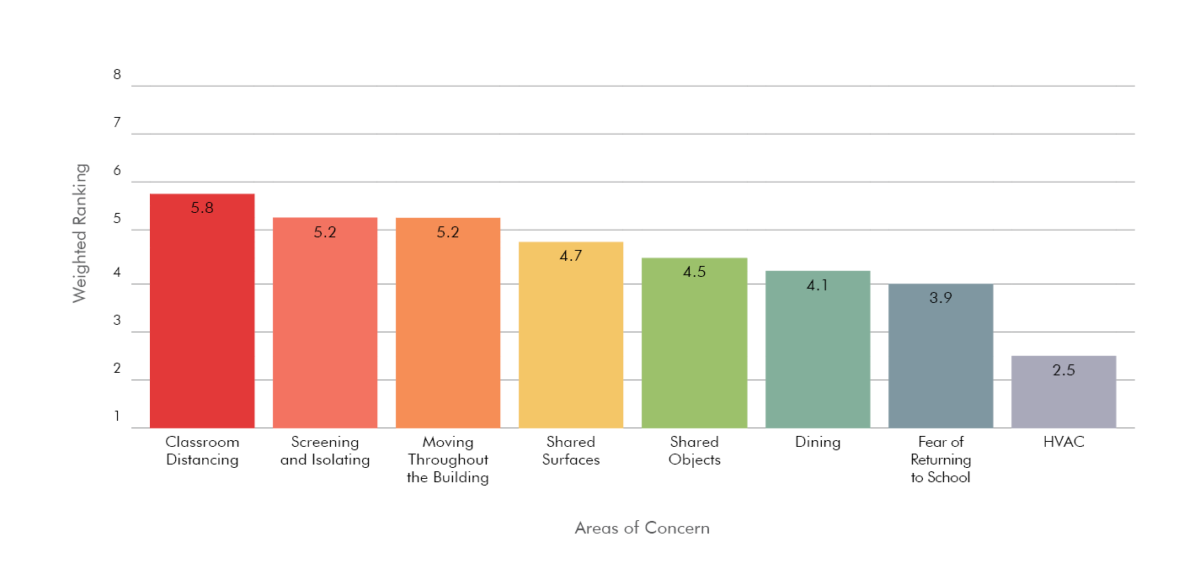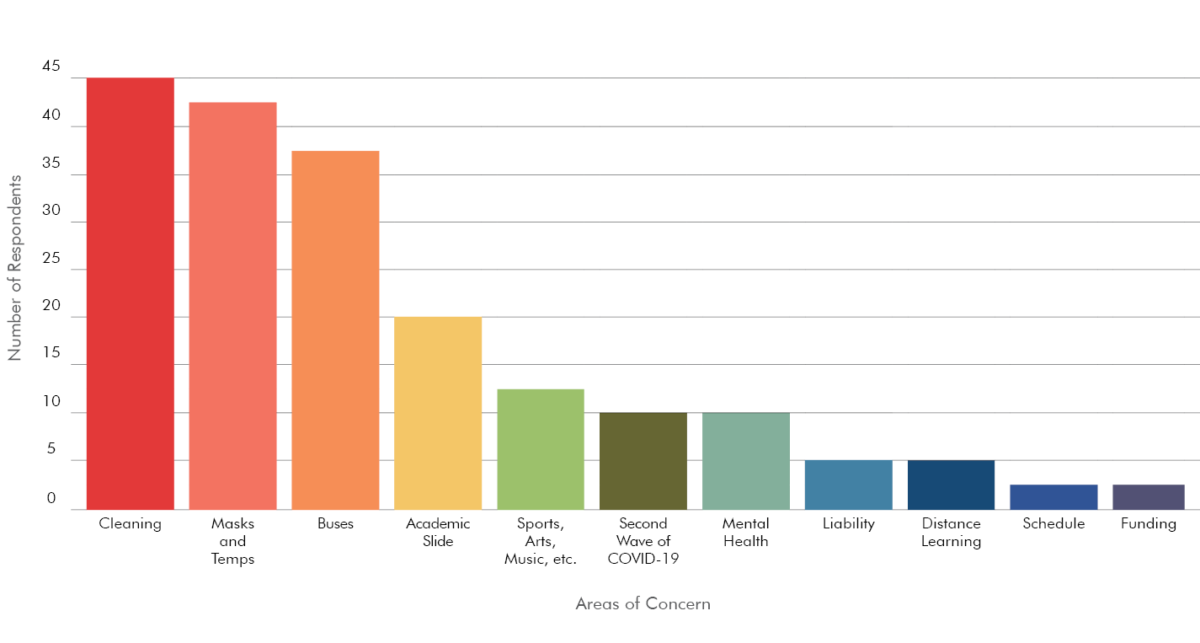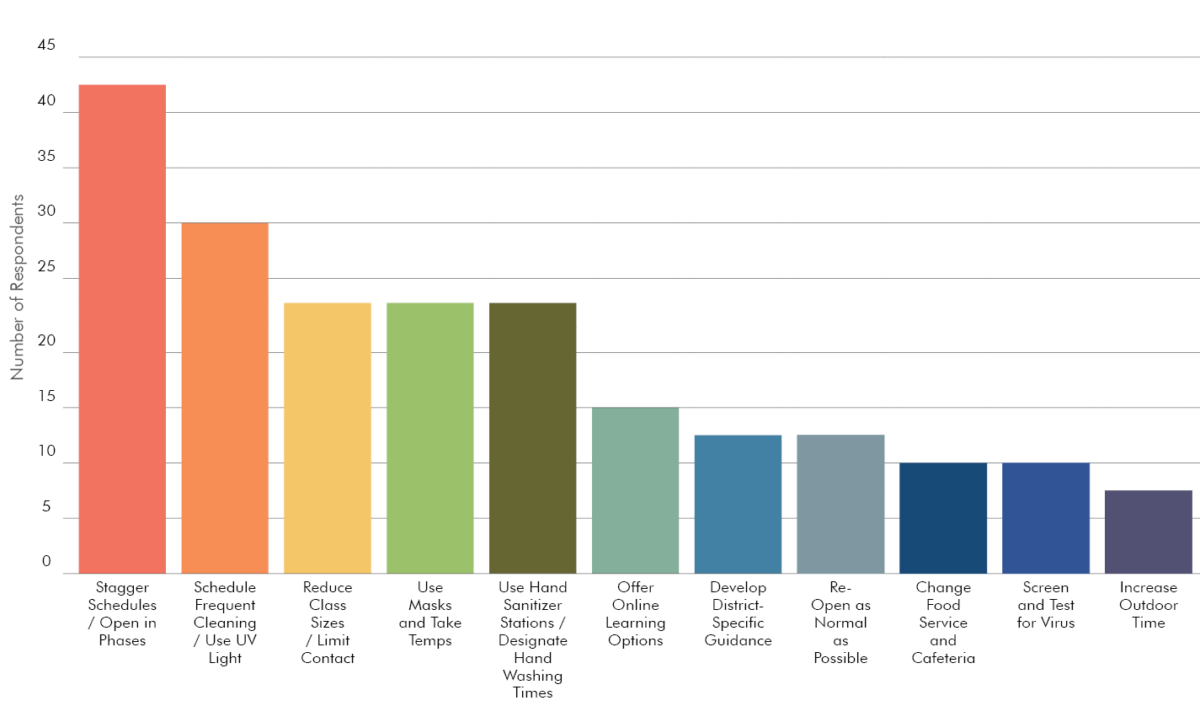Moseley Architects developed a survey that was shared with more than 1,000 professionals who dedicate their careers to public education in Maryland, Virginia, North Carolina, and South Carolina. These individuals included school board members, superintendents, educators, administrators, curriculum specialists, maintenance directors, finance directors, project managers, chief financial officers, chief operation officers, grounds officials, and dozens of other professionals who are responsible for safely educating students.
Our survey focused on three important inquiries:
1. Rank your top concerns.
2. List other concerns you have.
3. Offer suggestions for addressing these issues.
Concerns: Quantitative Results

As illustrated in Figure 1, which summarizes weighted averages of respondents top eight concerns, respondents are very focused on effective distancing in the classroom as well as moving throughout the building.
Respondents were equally concerned with how to screen or isolate individuals to limit the spread of COVID-19, particularly since symptoms can go undetected.
Given the collaborative nature of a 21st century public education, students and educators often share spaces and resources. Exposure to shared surfaces (i.e., desks, shelves, tablets, sinks, counters, etc.) and objects rounded out the top five critical issues school systems are considering as they plan to re-open schools.
Respondents also viewed applying distancing guidelines to dining operations as a critical issue.
Not surprisingly, respondents worry that both students and teachers may be too afraid to return to class.
Concerns: Qualitative Results

The survey concluded with a free-form field in which respondents could list additional concerns they have. The most common concern respondents have is cleaning school facilities. Some respondents emphasized the importance of cleaning practices being shared with teachers, parents, and the community as a way of quelling fears of returning to the classroom.
The top three concerns encompassed sanitation; resources for prevention, such as masks and health screenings; and safety on buses. Respondents were particularly concerned that additional vehicles and drivers may be required to enable social distancing en route to school.
Additional concerns focused on mental health, inability to continue extracurricular activities (i.e., sports, musical events, field trips, etc.), and avoiding the dreaded academic slide, particularly with students who do not have access to online resources.
Suggested Practices

Our final inquiry focused on strategies that might be considered as districts decide when and how to re-open schools.
Staggering schedules or opening in phases was the most common plan suggested.
Respondents also proposed social distancing in the classroom may be achieved by reducing the number of students in a classroom and limiting interpersonal contact.
Additionally, scheduling frequent and thorough cleaning of common surfaces at school facilities was suggested as a mitigation strategy.
Other suggested strategies included requiring masks, and designating hand washing schedules.
Survey Impact
While the scientific data surrounding COVID-19 continues to evolve, distancing, masks, ample hand washing, reducing occupancy in enclosed spaces remain the prevailing wisdom. Focused on these ideas, our educational designers began brainstorming on space planning diagrams that tackled social distancing in the classroom. Our goal was to:
1. Keep students and teachers six feet apart.
2. Offer school systems reasonable direction for meeting roughly 50 percent capacity.
3. Simplify the challenges of bus transportation, bathroom use, and dining.